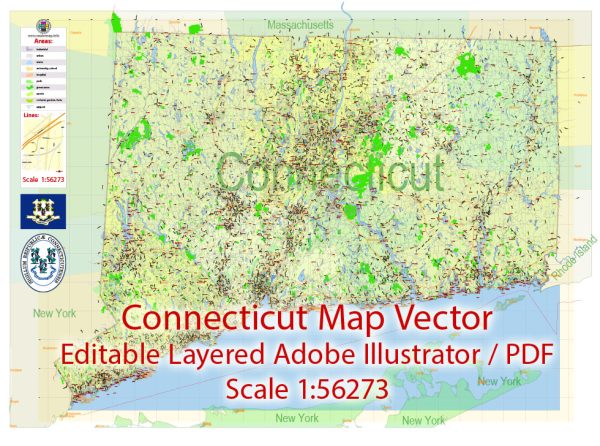Connecticut has a well-developed transportation system that includes various modes of transportation to serve its residents and visitors. Here’s an overview of Connecticut’s transportation system:
- Roads and Highways: Connecticut has an extensive network of roads and highways that connect the state’s cities and towns. Major highways include I-95, I-84, I-91, and I-395. These highways facilitate the movement of people and goods within and through the state.
- Public Transit: Connecticut has a public transit system operated by the Connecticut Department of Transportation (CTDOT). This system includes buses and commuter trains. The Metro-North Railroad serves as a commuter rail service connecting Connecticut to New York City. Bus services are provided by various regional transit authorities, including CT Transit.
- Airports: Connecticut is served by several airports, the largest and most prominent being Bradley International Airport in Windsor Locks. This airport offers domestic and limited international flights, making it a key transportation hub for the state.
- Ports: Connecticut has several ports, including the Port of New Haven and the Port of Bridgeport. These ports facilitate cargo transportation, including container shipping and bulk cargo.
- Bicycling and Pedestrian Infrastructure: Connecticut is actively working on improving its biking and pedestrian infrastructure. Cities like New Haven and Hartford have made efforts to make the urban areas more bike and pedestrian-friendly.
- Rail Transportation: Apart from commuter rail services, Amtrak’s Northeast Corridor runs through Connecticut, providing intercity rail service between Boston and New York City. Amtrak’s Acela Express, a high-speed rail service, also serves the state.
- Ferries: Some areas of Connecticut, particularly along the Long Island Sound, are accessible by ferry. Ferry services connect places like New London, Bridgeport, and others to Long Island, New York.
- Tolls: Connecticut has explored the possibility of implementing tolls on major highways to generate revenue for transportation infrastructure improvements. However, as of my last update in September 2021, this had not been implemented yet.
- Ridesharing and Transportation Network Companies (TNCs): Companies like Uber and Lyft operate in Connecticut, providing additional transportation options for residents and visitors.
- Planned and Ongoing Projects: The state continuously invests in improving its transportation infrastructure, including road and bridge maintenance, transit system upgrades, and expansion of commuter rail services.
It’s important to note that the transportation system in Connecticut may have seen changes and developments beyond my last update in September 2021. For the most up-to-date information, you can refer to the Connecticut Department of Transportation’s website or local news sources.


 Author: Kirill Shrayber, Ph.D.
Author: Kirill Shrayber, Ph.D.